June bugs are a group of scarab beetles known for their plant-eating habits. Often recognized for their buzzing flight patterns during warm summer nights, they are a topic of intrigue and curiosity for many every year.
While in some areas the June bugs are quite prevalent, in other areas the question keeps on buzzing: Where are the June bugs this year?
June bugs this year have significantly been found in Houston and Texas. While they are widespread across North and South America in June, their larvae remain largely hidden, spending the majority of their life cycle beneath the soil.
Remarkably, even in their adult phase, they continue this subterranean habit, burrowing during daylight hours.
With over 800 species of June bugs, they play a significant role in the ecosystem, both as pests and as a food source for various animals.
This comprehensive guide delves deep into the world of June Bugs, shedding light on their identification, lifecycle, myths, habitat, and more.
What Do June Bugs Look Like?
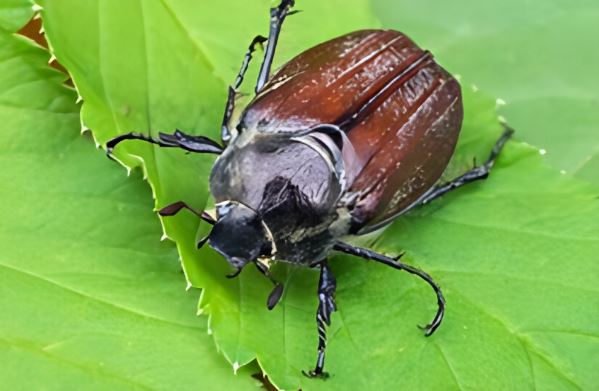
June bugs are beetles that typically measure between 1/2 inch to 1 inch in length. However, the larva measures ¾ to 2 inches in length. They possess a thick, oval-shaped body. While most June bugs are reddish-brown in color, some can also be dark green. June bug wings and heavy bodies are shiny.
The larvae of June bugs are c-shaped, cream-colored with a brownish-red head. Their clubbed antennae can press tightly together or be fanned open like a feather.
Looking for reliable pest control solutions in Huntsville? Book your free consultation with us today! Specializing in pest control Huntsville, we are dedicated to providing top-notch services in your area.
What are the Different Types of June Bugs?
There are 7 basic types of June bugs, each with distinct characteristics. Here are some of the common types and how to identify them:
1. Common June Beetle (Phyllophaga)
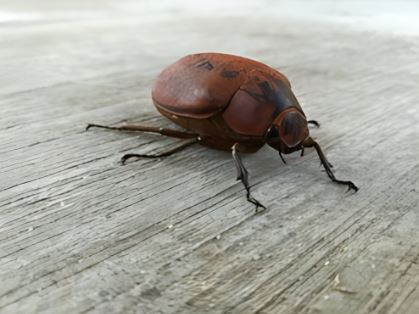
Appearance: Reddish-brown to blackish in color.
Size: 12 to 35 millimeters in length.
Behavior: Nocturnal and are attracted to lights.
2. Ten-lined June Beetle (Polyphylla decemlineata)
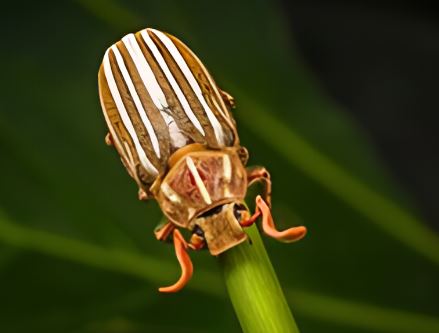
Appearance: Distinct white stripes on wings.
Size: Larger than the common June beetle.
Behavior: Produce a hissing sound when disturbed.
3. Green June Bug (Cotinis nitida)
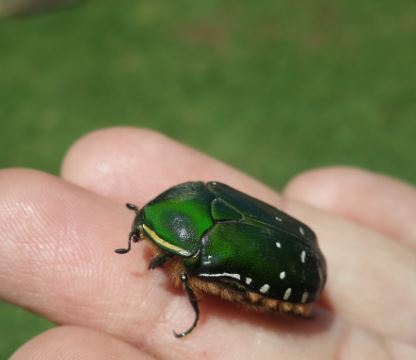
Appearance: Shiny, metallic green color.
Size: Slightly smaller than the common June beetle.
Behavior: Fly during the day, especially in warm, sunny conditions.
4. Green Fruit Beetle
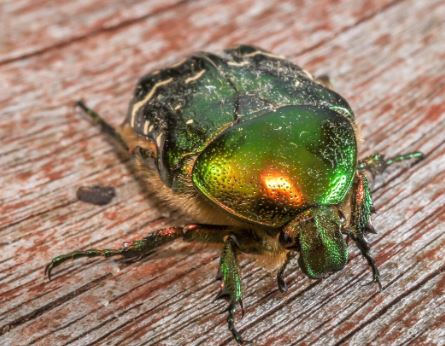
Appearance: Similar to the Green June Bug but feeds on ripe fruits.
Size: Comparable to the Green June Bug.
Behavior: Attracted to ripe fruits and can be found in orchards.
5. May Beetle
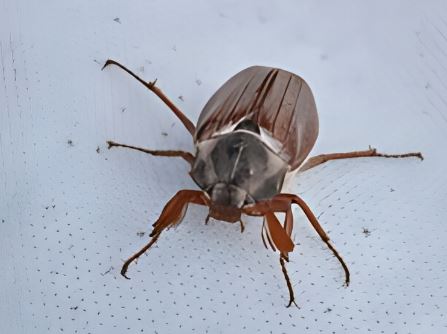
Appearance: Brownish in color and are stout.
Size: Varies depending on the species.
Behavior: Nocturnal and are attracted to lights.
6. Masked Chafer
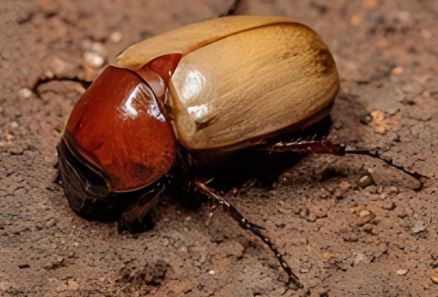
Appearance: Light brown with a dark head and a distinct mask-like pattern.
Size: Smaller than the common June beetle.
Behavior: They are known to damage lawns as their larvae feed on grass roots.
7. European Chafer
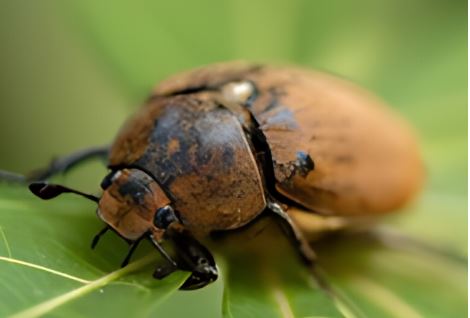
Appearance: Light brown with a slightly hairy body.
Size: Comparable to the Masked Chafer.
Behavior: Their larvae are a significant lawn pest.
June Bug Vs Cockroach
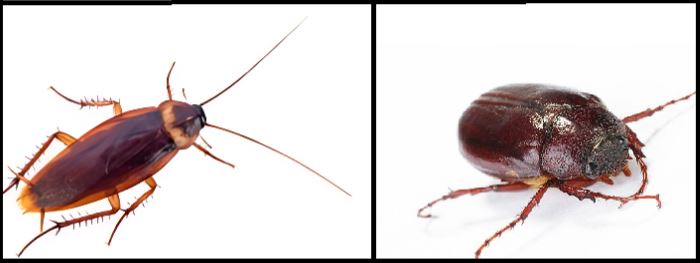
June bugs and cockroaches differ significantly in their physical appearance. June bugs are reddish-brown or dark green with a hard exoskeleton, giving them a shiny appearance. They are more rounded and have noticeable wings.
On the other hand, cockroaches are typically brown or black with a flattened body, long antennae, and a more elongated shape. Besides appearance, the other significant differences include:
- Habitat: While June bugs are primarily outdoor insects found in gardens and lawns, cockroaches can thrive both outdoors and indoors, especially in dark, damp areas.
- Behavior: June bugs are nocturnal and are particularly attracted to lights, often seen swarming around outdoor lighting at night. Cockroaches, also nocturnal, tend to avoid light and are known to scurry away when exposed.
- Lifecycle: The larvae of June bugs, known as grubs, live in the soil and feed on plant roots. In contrast, cockroach nymphs resemble smaller versions of adult cockroaches and don’t undergo a complete metamorphosis like June bugs.
- Diet: June bugs primarily feed on vegetation, especially the leaves of trees and shrubs. Cockroaches are omnivorous scavengers, consuming a wide range of materials, from food scraps to paper.
- Movement: Both insects are capable of flight. However, while June bugs have wings and can fly, they are not very skilled fliers. Cockroaches are swift runners, and some species are also adept at flying.
When Do June Bugs Come Out?
June bugs come out in late spring from late May to early June. These nocturnal insects are drawn to lights and can often be seen swarming around outdoor lighting fixtures during warm evenings. The exact timing of their emergence can vary based on geographical location and specific weather conditions.
Why do June Bugs Come Out in June?
June bugs come out in June because they emerge from the soil at the end of spring or the beginning of summer. Their active period aligns with the warmer months of May and June. This is how they earned the name “June Bug.” They are often referred to as May bugs or July bugs too.
When Do June Bugs Go Away?
June Bugs go away by the end of summer, around late August to early September. While adult June bugs begin to decrease in numbers, their larvae remain underground, feeding on plant roots.
These larvae will stay beneath the soil throughout the winter and prepare to emerge as adult beetles in the subsequent spring. The departure of June bugs can also be influenced by regional climate and environmental factors.
Lifecycle of June Bug
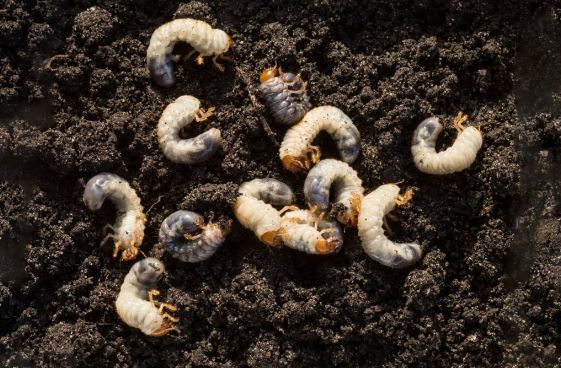
The lifecycle of a June bug spans 1 to 2 years. In the mid-summer months, specifically July and August, female beetles lay between 60 and 75 eggs underground over a two-week period. It goes through the following phases:
- Mating and Egg Laying: Adult beetles emerge from the soil in late May and early June. Females then burrow back into the soil to lay their eggs in July and August.
- Larval Stage: These eggs hatch into larvae known as white grubs, which feed on grass roots for a couple of seasons. Most species of June bug larva spend about 10 months in the ground, some even up to two years.
- Pupation: After about 9 to 10 months, around May or June of the following year, they enter a pupal stage lasting three weeks and emerge as adult beetles to start the cycle anew.
- Adulthood: By late June or early July, June bug pupa transform into their adult form, taking on a reddish-brown or metallic green hue. These adult beetles emerge during the hottest weather, feeding on foliage and fruits, marking the beginning of a new cycle.
How Long Do June Bugs Live?
June bugs live for approximately 3 years, with their adult stage lasting less than one year. While they live underground for the majority of their lives, the adult June bugs emerge and are active for a relatively short period before completing their life cycle.
What Do June Bugs Eat?
June bugs eat the leaves of trees and shrubs. They are particularly fond of the foliage from deciduous trees like oak, walnut, and maple.
Additionally, they can also eat the leaves of certain fruit trees, including apple and peach trees.
In their larval stage, known as white grubs, they live underground and eat the roots of grasses and other plants, which can sometimes lead to damage in lawns and gardens.
Where Do June Bugs Live?
June bugs are common throughout North and South America. They typically live a short period in their adult stage and spend the majority of their life span underground in the form of a grub.
Specifically, they can be found in the Northern Hemisphere, including North America, Europe, and Asia.
What Attracts June Bugs?
Bright light attracts June bugs, especially during the evening. They are strongly drawn towards indoor lights and are commonly seen around well-lit areas like porches and patios.
However, prolonged exposure to intense light can be harmful to them, and it’s not uncommon to find them dead beneath these sources the next day.
Do June Bugs Fly?
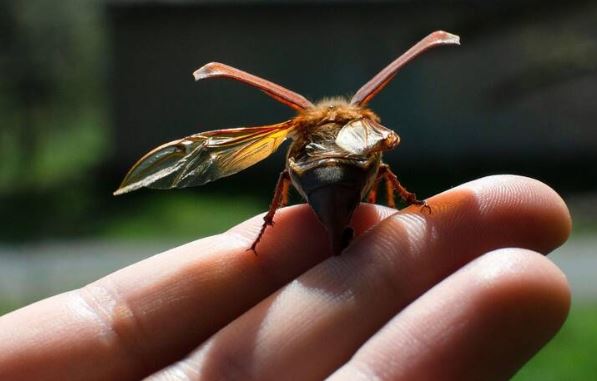
Yes, June bugs do fly. They have two sets of wings, however, their flight capabilities are somewhat limited due to their hefty body structure. While they can take to the air, they are not particularly skilled fliers. Often, you might observe them hovering around porch lights during summer evenings.
Their attraction to light sources can sometimes lead to clumsy encounters with humans, as they may bump into people or objects.
Additionally, after exerting themselves in flight, June bugs occasionally land on their backs and struggle to right themselves, a behavior many have observed during the warmer months.
How Do June Bugs Get in the House?
June bugs get in the house by any small opening or gap that can provide an entry point. They often enter through open windows or doors attracted by indoor light. Due to their nocturnal nature, they are most active during the night, making it more likely for them to venture indoors during these hours.
What Causes June Bugs to Swarm?
June bugs swarm primarily due to mating behaviors. On warm sunny days, adults may gather over open grassy areas. Their swarming is also influenced by their attraction to artificial lights, especially during summer evenings. This behavior can be particularly noticeable around porch lights and other outdoor lighting fixtures.
Myths Surrounding June Bugs
There are several myths associated with June Bugs. One common myth is that June bugs are attracted to the moon.
In reality, they are drawn to lights at night, often seen swarming around porch lights or street lamps. Another myth is that June Bugs are blind, given their seemingly clumsy flight.
However, they are not blind but have a rather uncoordinated flight pattern.
Why Are There So Many June Bugs?
There can be many June bugs in your lawn if there is a heavy infestation of grubs, often due to an abundance of plants.
Fluctuations in weather patterns and a decrease in their natural predators, exacerbated by the excessive use of pesticides, can also contribute to their increased presence.
On the flip side, many are wondering about the possible reasons to why are there no June bugs this year 2023.
There are no June bugs this year, and the possible reasons include adverse weather conditions, such as droughts, which can disrupt their life cycle.
Urbanization and certain agricultural practices might have led to a decrease in their natural habitats. Additionally, the increased use of pesticides can significantly reduce their numbers.
Natural predators, like birds or other insects, might be consuming them in larger quantities. Furthermore, diseases or parasites could be affecting the June bug population.
It’s essential to consider these factors in conjunction with local environmental changes to understand the decline fully.
Benefits of June Bugs in Your Garden!
June bugs, often viewed as nuisances, can be beneficial for your lawn in several ways:
- Natural Aeration: Their larvae, known as grubs, aerate the soil as they move. This helps in improving soil health by allowing better water infiltration and root growth.
- Food for Wildlife: They serve as a vital food source for lizards, birds, toads, rodents, and small mammals, enhancing garden biodiversity. Also, the white grubs are considered excellent bait for fishing.
- Pollination: Adult June bugs are attracted to lights at night but during the day, they feed on flowers. While they aren’t the most efficient pollinators, their movement from one flower to another can aid in the pollination process.
- Natural Pest Control: The presence of June bugs can attract birds and other natural predators that not only feed on the bugs but also on other harmful pests in the garden.
Are June Bugs Harmful?
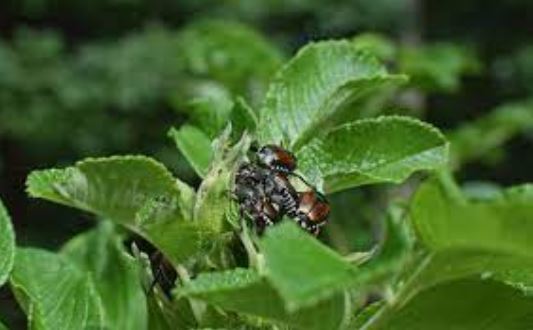
No, June bugs are not harmful to humans as they do not bite or sting. However, they can pose challenges in other ways. Their larvae, known as grubs, can cause significant damage to lawns and gardens by feeding on plant roots. This feeding activity can lead to the yellowing or browning of foliage and can make the ground feel spongy when walked upon.
Also, the presence of these grubs in the soil can attract other pests such as moles, raccoons, and rodents. These animals dig up lawns and gardens in search of the larvae, causing further disruption to the landscape.
Signs of June Bug Infestation
Signs of a June bug infestation include:
- Brown patches in the lawn, indicating damage from grubs feeding on grass roots.
- Evidence of digging in the yard as small animals, like birds or moles, search for June bug grubs to eat.
- Holes chewed in the leaves of plants, shrubs, and trees.
- Dead spots on your lawn or near the roots of plants.
- Seeing June bugs flying around outdoor lights during the evening.
How to Keep June Bugs Away?
To keep June bugs away, consider the following methods:
- Maintain a Clean Porch: Keeping your porch and outdoor areas clean can deter June bugs from congregating.
- Change Your Light Bulbs: June bugs are attracted to lights, especially white lights. Switch to yellow or sodium vapor lights, which are less attractive to these insects.
- Reduce Fertilizer Use: Over-fertilizing can attract June bugs. Use fertilizers sparingly to make your lawn less appealing to them.
- Introduce Natural Predators: Birds, frogs, snakes, skunks, and lizards are natural predators of June bugs. Encouraging these predators can help control the June bug population.
- Plant Repellent Plants: Plants like rosemary or lavender can deter June bugs due to their strong smell.
- Regular Lawn Maintenance: Regular mowing and cleaning up leaf litter can make your property less appealing to June bugs.
- Professional Consultation: If you’re facing a severe infestation or want to take preventive measures, it is always better to call a professional. At Mr. Buggs, we offer expert services to handle various pest issues, ensuring your home and garden remain bug-free. With our professional consultation, you can get a customized plan to manage and prevent June bug infestations effectively.
Help is One Phone Call Away
Experience hassle-free pest control with Mr. Bugg’s! Just one call, and our experts are at your service. From June bugs to termites, cockroaches to mosquitoes, we provide tailored treatments for every pest and every pocket. Protect your home this summer with our comprehensive and affordable solutions.

